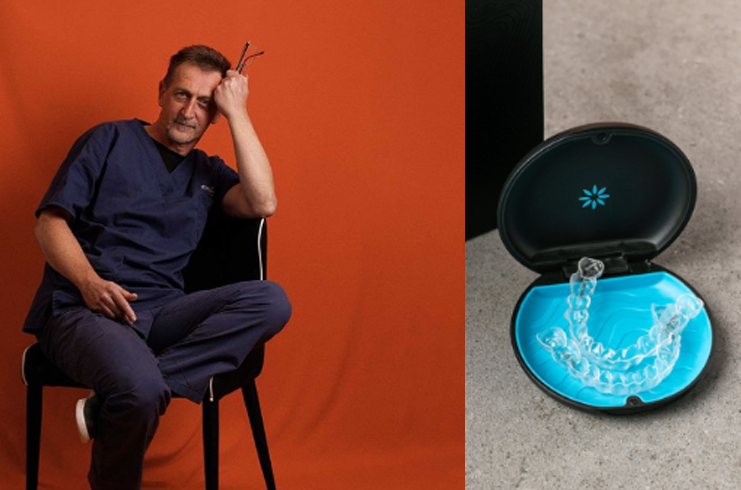When you walk along the street or in the shops, you would notice more people than ever before with braces. Then you might talk to family, friends and work colleagues and find out they are electing to get orthodontic treatment done as well!
More and more people are electing to have orthodontic treatment completed, and it might have you wondering if you should too. So why do you need to straighten your teeth? Dr David Argent, one of our resident go to dentists for orthodontic treatment, sheds light on why more and more people are electing to have their teeth straightened.
Dr David Argent explains there are 3 main reasons and concerns when exploring orthodontic treatment. The 1st is aesthetics, which is one the biggest reasons people get their teeth straightened. You might be concerned about gaps, or spacing, maybe even teeth which are crowded and overlap. And while orthodontics are not considered a cosmetic treatment, very real benefits have been shown toward improved self-confidence and mental health.
The 2nd reason Dr David Argent describes for orthodontics is for the bite. The term ‘bite’ relates to how the upper and lower teeth sit in your mouth when they come together. You might notice your front teeth don’t touch the front bottom teeth when you bite together and that’s called an open bite. Maybe you’ve noticed your lower teeth overlap or cover the upper teeth and that’s called an under bite. Sometimes the front upper and lower teeth cross over where half the teeth sit in front of the lower teeth and half sit behind the lower teeth, and that’s called cross-bite. Or finally you might notice that your front upper teeth completely cover your front lower teeth when you bite, and that’s called deep bite.
But does my bite affect my health in any way? The answer is yes! Through the course of orthodontic treatment, different methods are used to align the bite to improve jaw position which can improve snoring and other related sleep disorders, reduce tooth grinding and headaches, and prevent future gum and teeth damage (think gum recession and teeth chipping).
The final reason for orthodontic treatment, but the least thought about is for oral hygiene. Think about it, if you have spaces, gaps or overlapping teeth, how easy would it be for bacteria to get into those small tight spaces and cause cavities and decay? But in comparrison, how hard is it to get into those spaces to clean them properly? Evenly spaced teeth makes brushing and flossing easier, food and bacteria less likely to get trapped, reduce uneven wear to teeth, and overal reduce chances of decay and leading to improved overall oral health in the long run.
Ok, so you’ve identified your concerns by name and how they might affect you, but where do you go from here? What are the options?
The best way to start is by booking an appointment with Dr David Argent for an Initial Consultation. In this appointment, we would do an examination of both your external profile including jaw muscle tenderness to indicate grinding, and an internal profile of specific measurements of gaps between teeth or overlapping, and how far forward or back the teeth sit when biting together.
Following an initial consultation, we see you again for a ‘Record Taking’ appointment which includes profile photos and internal impressions to show where you started in your orthodontic journey. If time permits, we may be able to take these records at the Initial Consultation.
After this we may need a 2nd consultation after reviewing the records and coming up with an individualised treatment plan, to advise of any changes to information we provided to you initially.
Following this, you would begin your orthodontic treatment which can vary in duration based on the amount of tooth movement and jaw correction that needs to occur, before finally at the end of treatment finishing with another set of photos and impressions, which are used to make you a lifelong retainer which can be fixed into the mouth (wire behind the teeth) or removable (tray/plate).
There are a number of options which can be explored when looking at orthodontic treatment. The most widely known is traditional braces with metal or ceramic (clear) brackets with wires used to connect the brackets together and slowly move the teeth.
A more up and coming choice which is becoming increasingly popular in adults is sequential clear aligners, for example Invisalign or Clear Correct. This is where small clear attachments are placed onto the teeth (the same material used for filling deep grooves in the teeth) to guide the teeth in the direction they need to move toward with the clear trays applying the necessary pressure.
Another option is lingual braces. This is the same concept of traditional braces where a metal bracket is attached to the teeth, however they are placed on the back side of the teeth so they are hidden.
Finally, the last option is to refer to an orthodontic specialist. Dr David Argent describes that this may happen when the required treatment is beyond the scope of practice, meaning it is a more complex case with a high degree of difficulty (think lots of teeth movement, less predictable teeth movement or major skeletal issues/imbalances such as a cleft lip or cleft palate). There are also other special considerations to think about such as in children, who may have been previous diagnosed with behavioural issues which may make treatment more complex.
Don’t forget, while there are a number of options available, it is important to discuss with us what you’d like to achieve, as not all options may be suitable for you. Keep up to date with us on our socials! You can find on Instagram and Facebook @aboutsmilesdental


